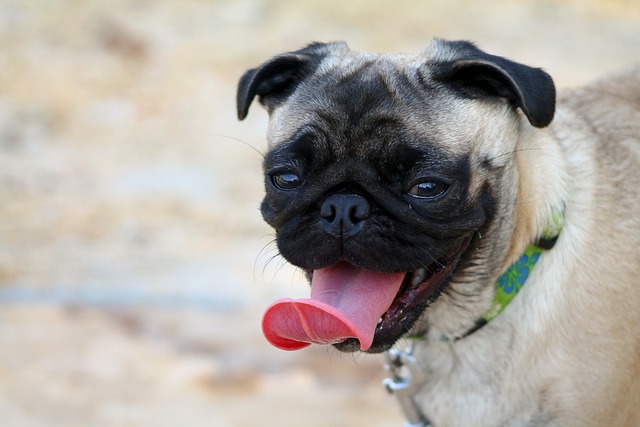Dogs, like humans, can experience a range of eye problems that may vary in severity. Early detection and appropriate treatment are crucial to preserving a dog’s vision and overall eye health. This comprehensive guide outlines various common dog eye problems, their causes, symptoms, and recommended treatments.
I. Common Dog Eye Problems: Understanding the different eye structures affected by common problems is key to recognizing issues promptly. The major parts include:
- Cornea
- Eyelids
- Conjunctiva
- Sclera
- Lens
- Retina
II. Dog Eye Infections: Signs and Treatment:
- Drainage from the eyes in hues of yellow, green, or red.
- Swelling, crusting, and hair loss on the eyelids.
- Red and swollen conjunctiva.
- Squinting or holding the eyes closed.
- Treatment involves eye drops for infection and, if the eyelid is affected, oral antibiotics may be prescribed.
III. Cherry Eye in Dogs: Causes and Treatment:
- Prolapse of the tear gland on the third eyelid.
- Common in brachycephalic and giant dog breeds.
- Mild cases may be treated with anti-inflammatory eye drops; severe cases require surgery.
IV. Glaucoma in Dogs: Signs and Treatment:
- Increased pressure in the eye.
- Early signs include eye pain, redness, and visible vessels.
- Medication to reduce fluid production or surgery (enucleation) in severe cases.
V. Conjunctivitis/Pinkeye in Dogs: Symptoms and Treatment:
- Green or yellow discharge, squinting, redness.
- Often triggered by allergies or viruses.
- Treatment with bacterial eye drops, occasionally steroids.
VI. Ectropion and Entropion in Dogs: Causes and Treatment:
- Ectropion: Drooping of the bottom eyelid.
- Entropion: Inward rolling of the eyelid.
- Breeds predisposed; surgery may be required to correct.
VII. Cataracts in Dogs: Causes and Management:
- Cloudiness in the eye due to lens transparency loss.
- Can be inherited, related to diabetes, aging, or inflammation.
- Treatment involves addressing underlying causes.
VIII. Lazy Eye in Dogs: Types and Treatment:
- Congenital in some breeds; sudden onset may signal neurological issues.
- Treatment depends on the underlying cause.
IX. Corneal Ulcers in Dogs: Causes and Treatment:
- Scratch or injury on the cornea.
- Common in brachycephalic breeds.
- Treatment with antibiotic eye drops; severe cases may require surgery.
X. Retinal Issues in Dogs: Causes and Treatment:
- Inherited diseases, high blood pressure, infections, toxins.
- Some cases may be reversible; treatment depends on the cause.
XI. Dog Eye Allergies: Symptoms and Treatment:
- Red, itchy eyes; bacterial infections may occur.
- Treatment involves corticosteroid eye drops and antihistamines.
XII. Dry Eyes in Dogs: Causes and Lifelong Treatment:
- Decreased tear production or increased exposure.
- Treatment includes eye lubricants and medications to preserve tear production.
XIII. Watery Eyes in Dogs: Causes and Treatment:
- Epiphora due to blockage or allergies.
- No treatment needed if no redness; otherwise, address inflammation or blockage.
XIV. Bulging Eyes in Dogs: Causes and Evaluation:
- Signs of glaucoma or pushed-out eyes.
- Requires veterinary assessment.
XV. Swollen, Irritated, Red, Squinting, Glassy, Cloudy, or Goopy Eyes in Dogs: Causes and Veterinary Evaluation:
- Various signs indicating different problems.
- Prompt veterinary assessment for appropriate diagnosis and treatment.
XVI. Growth/Lump on a Dog’s Eyelid: Types and Surgical Treatment:
- Benign tumors (meibomian cysts) or malignant tumors.
- Surgical removal may be necessary.
XVII. Third Eyelid Visible in Dogs: Causes and Evaluation:
- Prolapse, tumors, nerve conditions, or eye pain.
- Veterinary examination required.
XVIII. Dog Eye Problems FAQs:
- Recognizing signs of eye problems.
- Importance of veterinary consultation.
- Caution against self-treatment without professional advice.
- Understanding and recognizing signs of dog eye problems are essential for responsible pet ownership. Regular veterinary check-ups and prompt intervention can ensure the well-being of your furry friend’s eyes and overall health.



